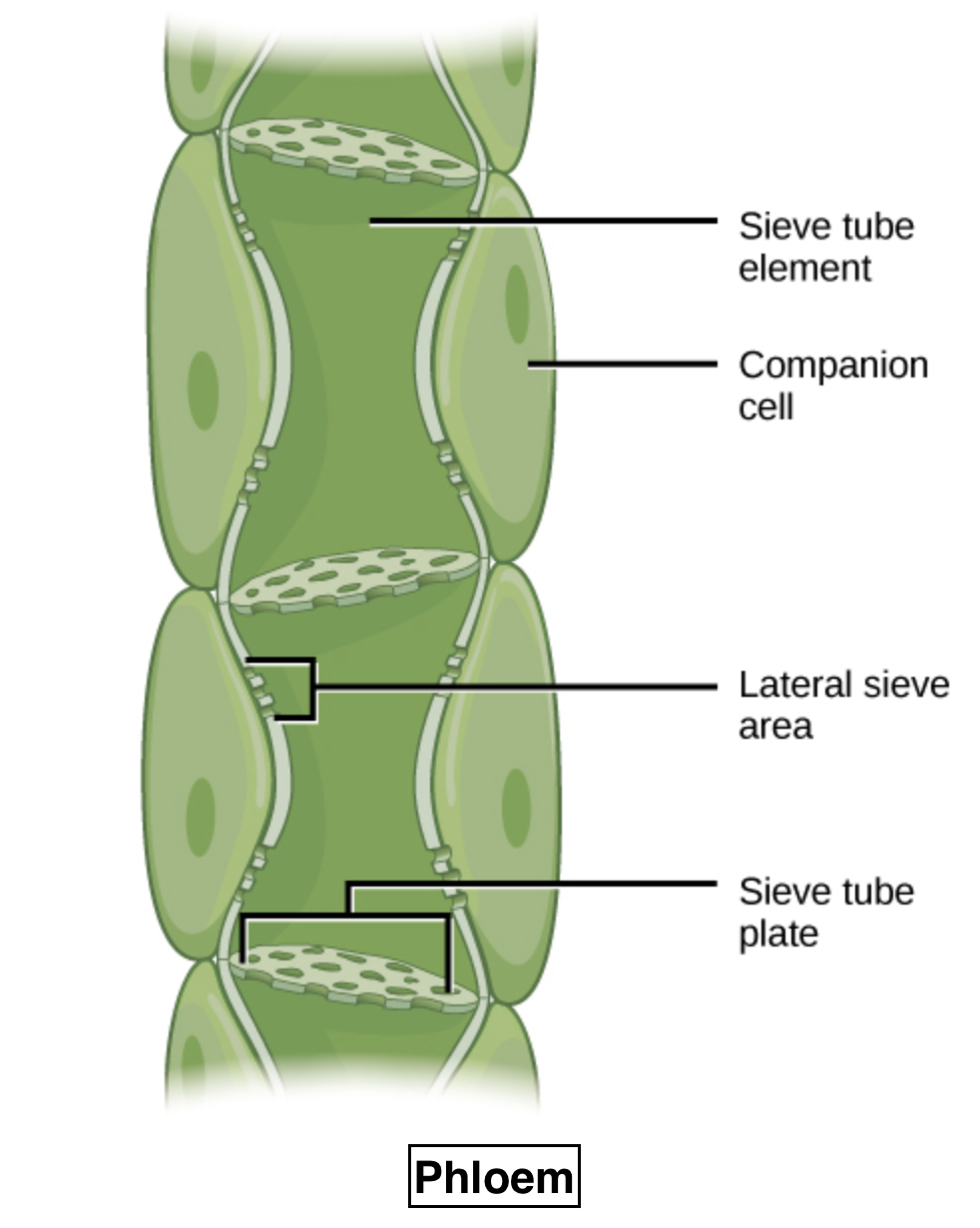
Enzyme controlling metabolism in mature sieve tubes are formed on instructions from DNA of
(a) Albuminous cells
(b) Companion cells
(c) Subsidiary cells
(d) Phloem parenchyma
Answer
561.6k+ views
Hint: In the phloem tissues of angiosperms, any of the metabolically-active parenchyma cells that are associated with a sieve tube element, and whose function is to provide energy to the sieve tube element during translocation.
Complete step by step answer:
A type of cell found within the phloem of flowering plants is called a companion cell, which is usually closely associated with a sieve element and, though it takes part in loading and unloading sugar into the sieve element and also seems to regulate the activity of the adjacent sieve element, Its function is uncertain. Likewise, a similar kind of function in gymnosperms can be seen where some albuminous cells which are found closely associated with gymnosperm sieve elements. In the case of non-angiospermous vascular plants(e.g., gymnosperms and ferns) rows of sieve cells, showing more primitive structural features, perform the same function. The elements of sieve-tube are almost always adjacent to nucleus-containing companion cells that have been produced as sister cells with the sieve element from the same mother cell. The companion cells die when they break down after function with the enucleate sieve-tube elements. The small pores of sieve cells and the larger ones of sieve elements are traversed by strands of cytoplasm called P-protein but it is not known whether P-protein is active in transport or not or in case of injury it merely serves as a seal against leakage.

So, the correct answer is, ‘companion cells’.
Additional information:
1) The companion cells are of two types: the ordinary companion cells and the transfer cells, the transfer cells differ from the ordinary companion cells in having plasma membrane infoldings that increase the surface area that permit larger areas of transfer.
2) Companion cells are not present in Pteridophytes and gymnosperms although some of them have a cell with a similar function (called an albuminous cell) that is closely associated with the sieve cell.
3) In 1880, the term 'companion cells' was first established by Wilhelm (from the German geleitzelle) to describe the nucleate cells associated with the SEs in angiosperms.
Note: Sieve tubes members lack ribosomes or a nucleus and hence they need companion cells to help them function as transport molecules. These companion cells help sieve tube members in the transfer of molecules between different parts of the plant and provide proteins necessary for signaling and ATP.
Complete step by step answer:
A type of cell found within the phloem of flowering plants is called a companion cell, which is usually closely associated with a sieve element and, though it takes part in loading and unloading sugar into the sieve element and also seems to regulate the activity of the adjacent sieve element, Its function is uncertain. Likewise, a similar kind of function in gymnosperms can be seen where some albuminous cells which are found closely associated with gymnosperm sieve elements. In the case of non-angiospermous vascular plants(e.g., gymnosperms and ferns) rows of sieve cells, showing more primitive structural features, perform the same function. The elements of sieve-tube are almost always adjacent to nucleus-containing companion cells that have been produced as sister cells with the sieve element from the same mother cell. The companion cells die when they break down after function with the enucleate sieve-tube elements. The small pores of sieve cells and the larger ones of sieve elements are traversed by strands of cytoplasm called P-protein but it is not known whether P-protein is active in transport or not or in case of injury it merely serves as a seal against leakage.

So, the correct answer is, ‘companion cells’.
Additional information:
1) The companion cells are of two types: the ordinary companion cells and the transfer cells, the transfer cells differ from the ordinary companion cells in having plasma membrane infoldings that increase the surface area that permit larger areas of transfer.
2) Companion cells are not present in Pteridophytes and gymnosperms although some of them have a cell with a similar function (called an albuminous cell) that is closely associated with the sieve cell.
3) In 1880, the term 'companion cells' was first established by Wilhelm (from the German geleitzelle) to describe the nucleate cells associated with the SEs in angiosperms.
Note: Sieve tubes members lack ribosomes or a nucleus and hence they need companion cells to help them function as transport molecules. These companion cells help sieve tube members in the transfer of molecules between different parts of the plant and provide proteins necessary for signaling and ATP.
Recently Updated Pages
Master Class 12 Business Studies: Engaging Questions & Answers for Success

Master Class 12 Economics: Engaging Questions & Answers for Success

Master Class 12 English: Engaging Questions & Answers for Success

Master Class 12 Maths: Engaging Questions & Answers for Success

Master Class 12 Social Science: Engaging Questions & Answers for Success

Master Class 12 Chemistry: Engaging Questions & Answers for Success

Trending doubts
What is meant by exothermic and endothermic reactions class 11 chemistry CBSE

Which animal has three hearts class 11 biology CBSE

10 examples of friction in our daily life

One Metric ton is equal to kg A 10000 B 1000 C 100 class 11 physics CBSE

1 Quintal is equal to a 110 kg b 10 kg c 100kg d 1000 class 11 physics CBSE

Difference Between Prokaryotic Cells and Eukaryotic Cells




